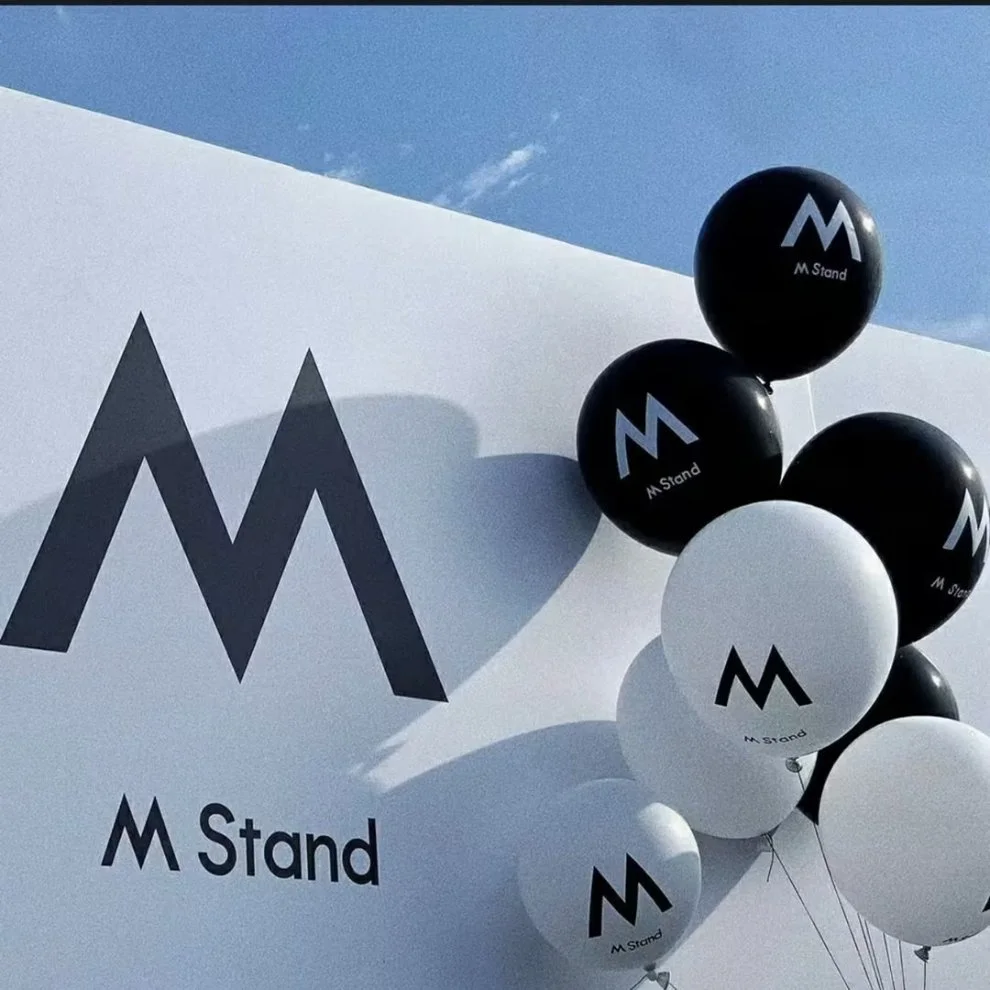What does the future look like for the US car industry?

If you like classic cars, it’s hard to go past the 1950s gems from America. The Fords, Chevys, Chryslers, Cadillacs, Buicks, Lincolns, Plymouths, Dodges; all sleek, chrome-laden, with distinctive tailfins, roomy interiors and big engines. They epitomized the style, innovation, craftsmanship and confidence of the US auto industry at the time, an era when the US led the auto world.
The 1973 oil crisis started to see the US dominance challenged. Consumers sought more fuel-efficient cars, and were lured by the quality and innovation coming out of Japan and Europe. Despite the strength of American culture globally, its car manufacturers have struggled to translate this into car sales, not adapting as fast to changing consumer needs as the Europeans, Japanese and, more recently, the Koreans. While America had the biggest pick-ups and popularized the People Mover, it wasn’t until Elon Musk launched Tesla that the US showed real leadership again with its cars.
A couple of weeks ago, Joe Biden announced a 100% tariff on Chinese-made electric vehicles as part of a package of measures designed to protect US manufacturers from cheap imports. Biden is encouraging other countries to follow suit.
There are drivers behind the US tariff decisions other than protecting American jobs. It is an election year and anti-China policies are popular with many voters in America. There is also the security angle: Chinese EVs are effectively smartphones on wheels. They could theoretically be controlled by someone in China and also send a lot of data back to Beijing. And if there was a war – let’s hope there isn’t - car assembly lines can quickly be pivoted to making military hardware. It is why Washington is so protective of its auto industry, and one of the drivers behind the subsidies and $85 billion bailout of GM and Chrysler in 2009.
The US approach is the opposite to Germany, who is pushing for Europe not to slap tariffs on Chinese cars.
Germany’s argument is two-fold. The first is that they are concerned that tariffs will be reciprocated, and put their massive China business at risk. The other, as noted by BMW CEO Olive Zipse, "We don't think that our industry needs protection," adding that operating on a global basis gives major automakers an industrial advantage. "You can easily endanger that advantage by introducing import tariffs."
To compete globally these days, brands need to be able to foot it against Chinese brands. China is already the largest trading partner to more than 120 countries including Japan, South Korea, Australia, New Zealand and the ASEAN bloc. Chinese brands are increasing their presence in these markets, and many others. It isn’t just EVs, but Tiktok, Temu and everything from smartphones to fashion – as Zara and H&M will attest. Chinese packaged goods brands are also spreading their wings. In the dairy category, which many Chinese were once afraid of local products, Yili is recognised as the most innovative milk brand in the world, and Mengniu is increasingly everywhere through its global sports sponsorships such as the Olympics and FIFA.
Last month’s announcements that Volkswagen will be investing $2.7 billion in a Chinese production site, and BMW’s $2.8 billion Chinese factory upgrade is a testament of the importance the German car makers are placing on remaining competitive in China, and by proxy, the world.
The CEO of auto giant Stellantis, who owns Chrysler, Dodge, Jeep, Ram, Fiat, Peugeot, Citroen, Alfa Romeo, Maserati and others, vowed to compete with Chinese brands, saying “We don't think that protectionism will give us a long-term way out of this competition.” Even Elon Musk opposes decoupling, recently doubling down on his China operation.
Whatever the drivers, putting up protectionist tariffs of 100% on Chinese EVs will disincentivise US car makers to be efficient and innovative. Losing this will further diminish the competitiveness of US cars, which doesn’t paint a rosy picture for the US industry in the medium-term.
The picture isn’t too rosy for the planet either. After Greece and Australia, the US has the lowest EV adoption rate in the West. The new tariffs will likely see US EV sales continue to fall behind. American’s transport emissions are already more than the next four highest countries combined: China, India, Russia and Brazil.
As JPMorgan's AsiaPac CEO Sjoerd Leenart noted last week about China: "You can’t ignore it, you have to do business there, even if you decide not to do business there, you need to understand what’s going on," adding that what happens in China "influences every industry around the world."
If you are reading this newsletter, there’s a good chance that you’re selling in the China market. In addition to the direct opportunities, it positions you well to understand Chinese competitors, and be more competitive globally as a result. Don’t lose sight of that.
A concise yet holistic summary of March 2025’s key marketing developments in China, highlighting valuable insights and their implications for brands.
Robots are coming to China and will likely be the next big addition to the marketing mix
Mixue is now the largest fast food chain in the world by stores. It hasn’t got there by following the Western outsourcing model, rather building on a structure that takes advantage of China’s unique infrastructure
A concise yet holistic summary of February 2025’s key marketing developments in China, highlighting valuable insights and their implications for brands.
Blind boxes are redefining value, experience, and ethics in consumption. The intersection of affordability, gamification, and sustainability is a powerful formula that brands can learn from and adapt.
Despite being winter, Naimi's novel fried chicken-looking ice creams are flying out of the chiller. Their success provides many valuable lessons for brands selling in China
From adapting flavours to creating viral moments, Oreo has continually evolved to meet the changing tastes and lifestyles of Chinese consumers, transforming the foreign brand into a household favourite.
Highlights of a study proposing solutions for the evolving landscape of China's consumer market amidst economic uncertainties and shifting consumer behaviours.
As the typically unexciting pharma industry proves, packaging innovation can breathe life into even the most mundane product categories.
How are China's blind box phenomenon and innovative product strategies are reshaping consumer behavior? Learn how brands can stay relevant in China's fast-paced market with creative, cost-effective approaches to meet evolving demand.
Although summer has come to an end in China, the enthusiasm for ice cups remains strong. Coffee ice cubes and fruit-flavoured ice ball cups have further encouraged people to explore DIY mixers and enhance their beverage experiences.
Traditionally, yoghurt has been seen as a symbol of purity, health, and deliciousness. But what would happen if we blended it with the flavours of some famous regional Chinese cuisines?
Founded in 2017, M Stand has continually evolved with its unique aesthetic and comprehensive innovations, positioning itself as more of a lifestyle brand than a coffee chain.
On September 10, 2024, Apple and Huawei held events on the same day to unveil their flagship products: the iPhone 16 series and the Mate XT Master Series. The impressive presentations left people in awe and suggested that the battle for high-end smartphones in China might just be getting started.
You can now book an at-home milk tea service! In Chengdu and Suzhou, some milk tea shops are launching this new service. What is driving the popularity of this new service?
This summer, the combination of mint and chocolate has become a trending flavour in China following its popularity in other countries. Various brands are introducing mint chocolate-flavoured products in drinks, ice cream, bakery and cakes.
What US policy decisions will do for the innovation and competitiveness of its auto industry and carbon emissions, based on feedback from industry leaders
China’s consumer data points to some interesting developments that will impact tourism behaviour internationally
Innovations of the distinctly Chinese tangyuans provide inspiration and ideas for food & beverage brands spanning most categories
Reaching consumers in unfamiliar markets is more straightforward through ecommerce than navigating complex and fragmented brick & mortar landscapes. This year over 120 billion parcels were delivered in China, versus less than 90 million in India
H&M has come back from being ‘cancelled’ in China, to investing in its China Design Hub to be closer to consumers. This is a wise move, not just to understand the local market, but also its competitors who are taking share globally
There are 430 million automobiles in China, almost all belonging to affluent consumers that can be reached through smart marketing strategies
It's a lot cheaper to retain a customer than acquire a new one, so the old adage says. Many marketers in China don't seem to have got that memo, with marketing plans based around increasingly expensive livestreams and KOLs for sales, with limited initiatives to retain those customers once they've transacted.We track many loyalty initiatives at China Skinny, but one of the most exciting we've seen lately is from Chinese EV brand, Nio. Car sales have been one of the brightest categories in China's retail sphere, last month growing 17% year-on-year. As we noted in July, Beijing has been strategic in putting its weight behind car sales - it takes a lot of packaged goods or shoe sales to match that of a single car in making retail sales look rosy.
It was March 2021 when the EU-China agreement protecting geographical indications (GIs) came into force. This aimed to recognise and protect around 200 distinct agri-food producing regions. It included well known specialties such as Feta, Prosciutto di Parma, Irish whiskey, Münchener Bier and Ouzo from Europe and Pixian Bean Paste, Anji White Tea, Panjin rice and Anqiu Ginger from China.
Last month, there were less than half as many celebrity marketing events in China as a year ago according to a report from Shiqu. The events were undoubtedly impacted by the extended tough lockdowns hitting Shanghai and other cities at present. Shanghai hosts a disproportionate number of celebrity events, and Shenzhen, which was locked down last month, is also a primary destination on the events map.
Visitors to a stunning old vineyard in China represent the increasing sophistication in tourism and general consumer purchases in the market
Chinese beauty brands are spending more than 2/3s of revenue on marketing, whereas foreign brands are under half that, and holding strong
By every measure, winter sports are booming in China leading into Beijing's Winter Games, presenting a multitude of opportunities for brands
Sustainability is becoming a key requirement of doing business in China - both due to consumer-pull and Beijing-push





























Anyone who has spent time in China is likely to have noticed how elaborate the packaging can be relative to similar products in Western countries. Goods are wrapped up as if for high tea in the depths of a Heilongjiang winter - one may have to make their way through four or five layers of intricate wrapping before reaching a tasty morsel buried deep inside. The perceived status, discovery or safety from fanciful packaging trumps any environmental concerns for most consumers.